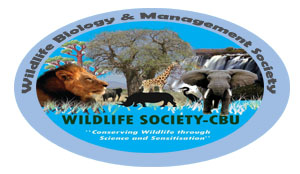 By Victor Siingwa –
By Victor Siingwa –
WEST Lunga National Park is one of Zambia’s National parks characterized with beautiful scenery of wildlife. The fauna in this area gives it the undoubtedly qualification of being an import bird site in Zambia.
However, it was explained in the previous articles concerning the various criterion through which an area is declared an important bird area. However, West Lunga national park and the Lukwakwa GMA are categorised as globally threatened and Biome- restricted species.
Site description
West Lunga is located in the North western province of Zambia particulary in Mwinilunga and Kabompo. This site is divided into two, demarcated by the west Lunga River from the Northen to the Southern part. Geographically the sites is located between 12°30’-13°11’S and 24°15’-25°01’E the total land area for West Lunga and Lukwakwa is aboult 445000ha. About 60% of the site area is occupied by Lukwakwa Game Management Area (GMA). This place is characterized with an altitude ranging from 1100-1400M above sea level.
This entails that the place is fairly warm with beautiful sunny days to welcome you when you visit this place. West Lunga National Park stretches up to Kabompo River whereas the western half of the site is occupied by the Lukwakwa GMA (No.5), the site shares the border with the Mwinilunga- Kabompo River on the western boundary. Throughout the site are networks of rivers and streams characterized with dambos and stripes of riparian forest and swamps.
Bird life in the site
There is an interesting selection of bird species in West Lunga and Lukwakwa GMAs, and most of the bird’s activities in the area are well represented in all vegetation Strata. Some species however, are restricted to this area and are worth mentioning they include: the Gorgeons Bush shrike and the Crested Guineafowl. The Drogo crowned Eagle, Pel’ Fishing Owl, thick-billed weaver green Twin sport etc.
We shall focus a little on the Crested Guineafowl because most people are familiar with its family member the helmeted Guineafowl which is usually domesticated. The helmeted guineafowl was the first guineafowl to be domesticated, although some other guineafowl species even from the crested guineafowl species are mentioned to be domesticated. In the Numida genera where the helmeted guineafowl is classified, four species are known to be well domesticated. Hence, the helmeted guineafowl are known to be the ancestors of the domesticated guineafowl because of them being commonly found in captivity (domesticated). Generally guineafowls like anything with a name are known by different names in Zambia here is what they call them, in Bemba the bird is known as ’Ikaanga’ while in Nyanja is as Nkaanga. At least we are familia with the above mentioned names as a general names referring to a guineafowls.
Crested Guineafowl (Guttera pucherani)
The crested Guineafowls is of a particular interest because it is not commonly noticed in captivity in Zambia like the helmeted one. Not only guineafowl are found in the west Lunga and Lukwakwa Bird area but an amazing distribution of bird species and other animals are present. Go See and Believe for yourself, spare some time, visit the site and the National park at large so that you can become a testimony bearer of this important Bird site. You shall be amazed that there shall be a lot of interesting and wonderful species ranging from animals to plant species that we are yet to talk about in these series of articles.
Long time ago the melodious songs sung by different birds where used to indicate to humans the time intervals, even today such communications methods are used in the same way, for instance in villages roosters will crow and humans will accurately approximate what that time is even though its night or day time.
Now you can be smart enough when you conserve Wildlife, remember conservation was first commissioned by God in the Garden of Eden and the first Wildlife Manager was Adam according to the Biblical account found in Genesis. Thus let us carry on the just and nobble work which our forefathers enjoyed doing. Let’s us avoid threats to wildlife resources such as Bush fires, introduction of alien species such the Tinthonia diversifolia the Mimosa species which are fast altering the natural habitats for our Birds and other animals. By doing this we can become good stewards. It all beings with ME and YOU together we conserve wildlife. Remember ‘’WILDLIFE AND MAN COEXIST’’. Below are the pictures of the Crested Guineafowl (Guttera pucherani)
Share with us your experiences, comments and recommendations. Send emails to wildlifemgtsociety@gmail.com






